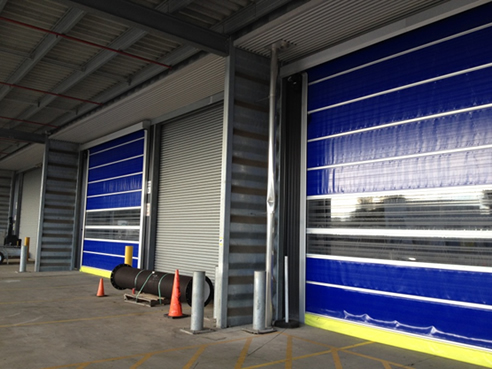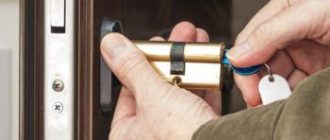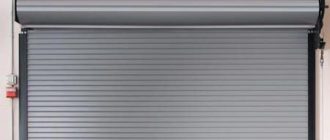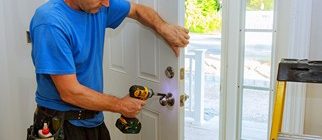
How do high-speed doors work
High-speed doors are an essential part of many industries, ensuring fast and efficient operations. These specialized doors are designed to open and close at rapid speeds, allowing for quick access while maintaining a controlled environment. But have you ever wondered how exactly these doors work and what makes them different from traditional doors?
At their core, high-speed doors operate on a simple principle of speed and efficiency. They utilize innovative technologies and advanced materials to achieve their impressive performance. One of the key components of these doors is the high-speed motor, which is specially designed to facilitate quick and smooth movements. This allows the doors to open and close swiftly, without sacrificing safety or durability.
Additionally, high-speed doors feature a series of sensors and controls that ensure precise and reliable operation. These sensors allow the doors to detect any obstructions and adjust their movement accordingly, preventing accidents or damage. Furthermore, the controls enable customization of operating speeds and settings, making these doors adaptable to various environments and applications.
Another crucial aspect of high-speed doors is their construction and materials. These doors are often made of durable and lightweight materials such as aluminum or PVC, allowing for swift movements without compromising strength. The doors also incorporate advanced insulation, which helps to maintain temperature-controlled environments, optimizing energy efficiency and reducing costs.
In conclusion, high-speed doors are a testament to engineering excellence. With their rapid operation, advanced sensors, and durable construction, these doors offer a superior solution for industries that require fast and efficient access. Whether it’s a warehouse, a manufacturing facility, or a cleanroom environment, high-speed doors are an essential component that helps businesses thrive.
Mechanism of High-Speed Doors
High-speed doors are designed to open and close quickly, allowing for efficient and rapid movement of people and goods. The mechanism behind these doors is what enables them to operate at such high speeds.
These doors are typically made up of multiple panels that are connected together, allowing them to roll up or slide open and closed. The panels are made from lightweight but durable materials, such as PVC or aluminum, that can withstand the high-speed operation.
The high-speed movement of the doors is achieved through the use of a motor or a series of motors that are connected to the panels. These motors provide the power needed to rapidly open and close the doors. The motors are controlled by a system that monitors the position of the doors and ensures that they operate smoothly and safely.
In addition to the motors, high-speed doors also incorporate various safety features to prevent accidents and injuries. These features may include sensors that detect obstacles or obstructions in the door’s path, emergency stop buttons, and safety edges that stop the door from closing if an object or person is detected in its way.
The high-speed mechanism of these doors allows for faster access and increased productivity in various industries, such as warehouses, manufacturing facilities, and cleanrooms. They provide a quick and efficient way to separate different areas while still allowing for easy movement of people and equipment.
In conclusion, high-speed doors rely on a sophisticated mechanism involving motors, panels, and safety features to achieve their fast and efficient operation. This mechanism enables these doors to work at high speeds, making them a valuable asset in many commercial and industrial settings.
Benefits of High-Speed Doors
High-speed doors offer a wide range of benefits for various industries and applications. These doors are specially designed to open and close quickly, allowing for efficient and smooth operation in high-traffic areas. Here are some of the key benefits of high-speed doors:
Improved Productivity: The fast opening and closing speed of high-speed doors help to optimize workflow and improve productivity. These doors minimize waiting times, allowing for seamless traffic flow and faster movement of goods and personnel.
Energy Efficiency: High-speed doors are designed to minimize air leakage and maintain a consistent indoor temperature. This helps to improve energy efficiency by reducing heating or cooling loss. The fast closing speed also helps to prevent the entry of outside air, dust, and pests, further enhancing energy efficiency.
Enhanced Safety: High-speed doors are equipped with advanced safety features to prevent accidents and injuries. They are designed to detect obstacles and immediately reverse the door’s direction to avoid collisions. Fast opening and closing speeds also reduce the risk of accidents, as there is less time for personnel or objects to get caught in the door.
Increased Security: High-speed doors are often made from sturdy materials with advanced locking systems, providing enhanced security for buildings and facilities. These doors can help to protect against unauthorized access, vandalism, and theft.
Easy Maintenance: High-speed doors are designed for durability and require minimal maintenance. The materials used in their construction are resistant to wear and tear, ensuring long-lasting performance with minimal maintenance effort.
Noise Reduction: High-speed doors are often equipped with soundproofing features, helping to reduce noise levels in busy environments. This creates a more comfortable working environment for personnel and can also help to minimize noise pollution in surrounding areas.
In conclusion, high-speed doors offer numerous benefits, including improved productivity, energy efficiency, enhanced safety, increased security, easy maintenance, and noise reduction. These doors are a valuable investment for any industry or application where fast and efficient operation is crucial.
Applications of High-Speed Doors
High-speed doors are versatile and can be used in a wide range of applications. Some of the common applications of high-speed doors include:
- Industrial facilities: High-speed doors are often used in industrial facilities, such as factories and warehouses, to provide quick and efficient access to loading docks and storage areas. These doors help to improve productivity by minimizing waiting times and optimizing logistics.
- Food processing environments: In food processing environments, high-speed doors are used to create a barrier between different areas to maintain hygiene and prevent contamination. These doors are made of food-grade materials that are easy to clean and resistant to the harsh conditions of food processing environments.
- Cold storage facilities: High-speed doors are ideal for cold storage facilities, where maintaining temperature control is crucial. These doors open and close quickly to minimize temperature variations, preventing energy loss and ensuring the integrity of the stored goods.
- Clean rooms: High-speed doors are commonly used in clean rooms, where maintaining a controlled environment is essential. These doors are designed to minimize particle generation and air leakage, ensuring the cleanliness and safety of the clean room environment.
- Automotive industry: High-speed doors are widely used in the automotive industry, particularly in manufacturing facilities and car washes. These doors help to streamline operations by providing fast access to assembly lines and wash bays, increasing productivity and efficiency.
In addition to these applications, high-speed doors can also be used in a variety of other environments, such as airports, parking garages, retail stores, and healthcare facilities. Their speed, durability, and functionality make them an ideal choice for many different industries and settings.
Types of High-Speed Doors
There are several types of high-speed doors available, each designed to meet different needs and requirements:
- Rapid Roll Doors: These doors are designed to open and close quickly, making them suitable for high-traffic areas. They are often used in warehouses, loading docks, and industrial facilities.
- Sectional Overhead Doors: These doors consist of multiple sections that move vertically and then horizontally, folding up into a compact space. They are commonly used in parking garages and commercial buildings.
- Fabric Roll-Up Doors: These doors are made of flexible fabric that rolls up and down. They are lightweight and durable, making them suitable for environments where there is a need for speed and durability, such as food processing facilities.
- High-Speed Folding Doors: These doors are made up of multiple foldable panels that open and close quickly. They are commonly used in areas with limited space, such as car washes and vehicle maintenance facilities.
- Security Doors: These doors are designed to provide both high-speed operation and security. They are commonly used in areas where there is a need for quick access and high levels of protection, such as airports, military facilities, and data centers.
Each type of high-speed door operates differently, but they all share the common goal of providing fast and efficient access while maintaining safety and security.
Components of High-Speed Doors
High-speed doors consist of several key components that work together to ensure fast and efficient operation. These components include:
1. Door Curtain: The door curtain is the main body of the high-speed door, which is made up of multiple horizontal slats or panels. These slats are typically made of durable materials such as aluminum or PVC, and they are connected by hinges or hinges and flexible materials to allow for smooth movement and flexibility.
2. Drive System: The drive system is responsible for opening and closing the high-speed door. It consists of an electric motor, drive mechanism, and control panel. The motor provides the power to move the door curtain, while the drive mechanism converts the rotational motion of the motor into linear motion to open or close the door. The control panel allows for easy operation and monitoring of the door.
3. Safety Features: High-speed doors are equipped with various safety features to ensure the protection of people and property. These features may include safety sensors, emergency stop buttons, safety edges, and light curtains. Safety sensors detect any obstructions in the path of the door and prevent it from closing, while emergency stop buttons provide an immediate stop in case of an emergency. Safety edges are rubber or foam strips that detect contact and stop the door from closing, and light curtains create an invisible barrier that, when interrupted, stops the door from closing.
4. Control System: The control system is responsible for managing the operation of the high-speed door. It includes a control panel that allows for easy programming and customization of the door’s operating parameters, such as opening and closing speeds, safety features, and timers. The control system also allows for the integration of the high-speed door with other systems, such as access control or alarm systems.
5. Peripherals: High-speed doors can be equipped with various peripherals to enhance their functionality and performance. These peripherals may include remote control systems, induction loop sensors, radar sensors, or air curtains. Remote control systems allow for convenient operation of the high-speed door from a distance, while induction loop sensors and radar sensors detect the presence of vehicles or pedestrians and trigger the door to open. Air curtains create a barrier of air that helps to maintain the internal temperature and prevent the ingress of dust and debris.
By understanding the various components of high-speed doors, one can appreciate the engineering and design that goes into their construction. These components work together to provide fast, reliable, and safe operation for a wide range of industrial and commercial applications.
Materials Used in High-Speed Doors
High-speed doors are designed to work efficiently and withstand the demanding conditions of various industrial environments. These doors are composed of different materials that ensure their durability, flexibility, and longevity. Some commonly used materials in high-speed doors include:
- High-quality PVC fabric: This material is typically used for the door curtain due to its strength, durability, and flexibility. It can withstand frequent opening and closing cycles without tearing or losing its shape.
- Aluminum or steel frames: The frames of high-speed doors are often made from aluminum or steel. These materials provide structural stability and support to the door curtain. They are strong enough to handle the high-speed operation of the door.
- Stainless steel components: Stainless steel is commonly used for various components of high-speed doors, such as hinges, tracks, and rollers. Stainless steel is corrosion-resistant, ensuring the longevity and reliability of the door.
- Flexible bottom edge: The bottom edge of high-speed doors is typically made of a pliable material, such as rubber or reinforced fabric. This flexible material allows the door to adapt to uneven surfaces and provide a tight seal.
- Safety features: High-speed doors incorporate various safety features, such as photoelectric sensors, safety edges, and emergency stop buttons. These components are made with durable materials to ensure that the doors operate safely and reliably.
These materials work together to create high-speed doors that are durable, efficient, and able to withstand the demanding work environments they are used in.
Factors to Consider When Choosing High-Speed Doors
When selecting high-speed doors, it is important to take into consideration several factors to ensure that you choose the right ones for your needs. These factors include:
| 1. Speed | One of the main advantages of high-speed doors is their ability to open and close quickly. Consider the speed at which the doors operate and choose one that suits the requirements of your facility. |
| 2. Safety | Safety is of utmost importance when it comes to high-speed doors. Look for doors that have built-in safety features such as motion sensors and emergency stop buttons to prevent accidents. |
| 3. Durability | High-speed doors are often subjected to heavy use and can experience wear and tear over time. Choose doors that are made from durable materials such as steel or aluminum to ensure longevity. |
| 4. Insulation | Depending on the climate and environment of your facility, it may be important to consider the insulation properties of the high-speed doors. Insulated doors can help to maintain a consistent temperature and reduce energy costs. |
| 5. Maintenance | Consider the maintenance requirements of the high-speed doors. Look for doors that are easy to clean and require minimal maintenance to keep them in optimal condition. |
| 6. Design | The design of the high-speed doors should also be taken into consideration. Choose doors that fit seamlessly with the style and aesthetic of your facility, as well as any branding or signage requirements. |
| 7. Cost | Finally, consider the cost of the high-speed doors. While it is important to stay within budget, it is also crucial to choose doors that meet all the necessary requirements and provide good value for money. |
By considering these factors, you can ensure that you choose the right high-speed doors for your facility that will provide optimal performance, safety, and durability.
Installation Process of High-Speed Doors
High-speed doors are installed with precision and care to ensure optimal performance. The installation process involves several steps that are carried out by trained professionals. Here is a detailed explanation of how high-speed doors are installed:
| Step | Description |
| 1 | The site where the high-speed door will be installed is prepared. This includes clearing any obstacles, ensuring a level surface, and making sure there is enough space for the door to operate smoothly. |
| 2 | The door frame is carefully positioned and secured in place. This frame provides the structure and support for the high-speed door. |
| 3 | The door curtain, which is made of durable and flexible material, is attached to the frame. This curtain is what opens and closes to allow access through the high-speed door. |
| 4 | The control panel and motor are installed. These components are responsible for the smooth operation of the high-speed door. |
| 5 | All electrical connections are made according to the manufacturer’s specifications. This includes wiring the motor, control panel, and any safety sensors. |
| 6 | The high-speed door is thoroughly tested to ensure proper functionality. This includes checking the opening and closing speeds, as well as testing any safety features. |
| 7 | Once the high-speed door passes all tests, it is ready for use. The installation team may provide training on how to operate and maintain the door. |
The installation process of high-speed doors requires expertise and attention to detail. It is important to ensure that the doors are installed correctly to guarantee their longevity and reliable performance in various work environments.
Maintenance of High-Speed Doors
Maintenance is crucial for ensuring that high-speed doors continue to work efficiently and safely. Regular maintenance helps to identify and address any potential issues before they become major problems. Here are some key considerations for maintaining high-speed doors:
- Regularly inspect the door’s components, such as springs, cables, tracks, and panels, to check for signs of wear or damage. Replace any damaged or worn-out parts as necessary.
- Clean the door’s tracks and panels regularly to remove dirt, debris, and any other foreign substances that could interfere with the door’s movement.
- Ensure that the door’s sensors and safety features are functioning properly. Test them regularly to make sure they can detect obstacles and stop the door’s movement when necessary.
- Check the door’s motor and electrical connections to ensure they are in good condition. Inspect the motor’s lubrication and replace it if needed.
- Follow the manufacturer’s recommendations for lubricating the door’s moving parts. Use a high-quality lubricant that is compatible with the door’s materials.
- Train personnel on how to properly operate and maintain the high-speed doors. Provide them with clear guidelines and instructions for routine maintenance tasks.
- Keep a record of all maintenance activities, including inspections, repairs, and replacement of parts. This record can help track the door’s performance over time and assist in planning future maintenance tasks.
By implementing a regular maintenance schedule and following these guidelines, high-speed doors can continue to work effectively and reliably, reducing the risk of downtime and costly repairs.
Common Issues with High-Speed Doors
While high-speed doors are designed to efficiently and smoothly operate, they may encounter common issues that can affect their performance. Understanding these issues can help in timely troubleshooting and ensuring the longevity of high-speed doors.
- Malfunctioning Sensors: High-speed doors are equipped with sensors that detect objects and prevent collisions. Over time, these sensors may become dirty or misaligned, leading to inaccurate readings and potentially causing damage.
- Wear and Tear: Due to their frequent use, high-speed doors may experience wear and tear on various components, such as springs, hinges, and cables. Regular maintenance and inspection can help identify and address these issues promptly.
- Electrical Problems: High-speed doors rely on electrical components, such as motors, control panels, and wiring. Issues with these components, such as loose connections or faulty wiring, can result in door malfunctions and safety hazards.
- Environmental Factors: Extreme temperatures, humidity, dust, and debris can impact the functionality of high-speed doors. Regular cleaning of door tracks and seals, as well as protection against harsh weather conditions, can help prevent issues caused by environmental factors.
- Lack of Lubrication: Proper lubrication is crucial for the smooth operation of high-speed doors. Insufficient lubrication or the use of the wrong type of lubricant can lead to increased friction, noise, and premature wear on moving parts.
By addressing these common issues promptly, high-speed doors can continue to operate efficiently and provide the desired performance, enhancing productivity and maintaining a safe working environment.
Cost of High-Speed Doors
The cost of high-speed doors can vary depending on several factors. The first factor is the size of the door. Larger doors will typically cost more than smaller doors due to the increased materials and labor required for their construction and installation.
Another factor that affects the cost of high-speed doors is the type of material used. High-speed doors can be made from a variety of materials including aluminum, steel, and fabric. Each material has its own advantages and disadvantages, which can impact the overall cost of the door.
The level of automation is also a factor that can affect the cost of high-speed doors. Some doors are manually operated, while others are fully automated and can be controlled remotely. The more advanced the automation features, the higher the cost of the door.
Additionally, the level of customization can impact the cost of high-speed doors. Doors that are custom-made to fit specific measurements or requirements may cost more than standard-sized doors.
Overall, the cost of high-speed doors can range from a few thousand dollars to tens of thousands of dollars, depending on the specifications and features of the door. It is recommended to consult with a professional door supplier or manufacturer for an accurate cost estimate based on specific needs and requirements.
Comparisons with Traditional Doors
High-speed doors work differently compared to traditional doors. Traditional doors, such as swing doors or sliding doors, open and close at a slow speed. They are often operated manually, requiring physical effort to open or close the door.
In contrast, high-speed doors are designed to open and close quickly, allowing for efficient traffic flow. They are typically automated, with sensors and control systems that detect movement and trigger the door to open or close. This automation eliminates the need for manual operation and reduces the time it takes to open or close the door.
Another key difference is the materials used in high-speed doors. Traditional doors are commonly made of wood or metal, which can be heavy and bulky. High-speed doors, on the other hand, are often made of lightweight materials such as fabric or PVC. These materials are durable and flexible, allowing the door to move quickly and withstand frequent opening and closing cycles.
High-speed doors also offer benefits in terms of energy efficiency. Traditional doors can be a source of air leakage, leading to heat loss or drafts. In contrast, high-speed doors are designed with features such as seals and insulation, minimizing air infiltration and maintaining a controlled environment. This helps to reduce energy consumption and improve overall insulation.
In summary, high-speed doors work by utilizing automated systems and lightweight materials to open and close quickly. They offer advantages over traditional doors in terms of efficiency, energy savings, and durability.
Environmental Impact of High-Speed Doors
High-speed doors have a number of environmental benefits due to their efficient operation. These doors are designed to open and close quickly, reducing the amount of time that the door is open and allowing for better control of indoor temperatures.
By minimizing the amount of time that doors are open, high-speed doors can help to reduce energy consumption in buildings. This is particularly important in areas with extreme temperatures, as the doors can prevent air conditioning or heating systems from working overtime to compensate for the loss of indoor air caused by open doors.
In addition, high-speed doors can help to prevent air drafts and keep out dust, dirt, and other contaminants from entering a building. This can lead to improved indoor air quality and a healthier working environment.
Furthermore, the fast opening and closing speeds of high-speed doors can help to minimize the impact of noise pollution. By reducing the exposure to noise from outside, these doors can create a more peaceful and comfortable indoor environment.
| Reduces energy consumption in buildings |
| Improves indoor air quality |
| Minimizes noise pollution |
In conclusion, high-speed doors not only provide functional advantages but also offer a positive impact on the environment by reducing energy consumption, improving indoor air quality, and minimizing noise pollution. These doors are an important part of creating sustainable and eco-friendly buildings.
Q&A:
What are high-speed doors?
High-speed doors are specially designed doors that open and close quickly, providing fast and efficient access to different areas such as warehouses, manufacturing facilities, and commercial spaces.
How do high-speed doors work?
High-speed doors are equipped with a high-performance motor and a flexible curtain made of durable materials. When activated, the motor drives the curtain to open or close at a high speed. The motor and curtain work together to ensure smooth and efficient operation.
What are the benefits of using high-speed doors?
High-speed doors offer several benefits. They help improve productivity by reducing waiting times and increasing the flow of people and goods. They also improve insulation and energy efficiency by minimizing the exchange of air between different areas. Additionally, high-speed doors enhance safety by preventing accidents caused by collisions with traditional slow-opening doors.
Are high-speed doors customizable?
Yes, high-speed doors are highly customizable. They can be tailored to fit specific requirements, such as size, color, and safety features. Different control options are also available, including remote controls, motion sensors, and access control systems.
Can high-speed doors be used in harsh environments?
Yes, high-speed doors are designed to withstand harsh environments. They are made of durable materials that can resist extreme temperatures, strong winds, and corrosive substances. They are also equipped with safety features, such as self-repairing curtains and emergency stop buttons, to ensure reliable operation even in challenging conditions.
What are high-speed doors?
High-speed doors are specially designed doors that operate at a much faster speed than traditional doors. They are commonly used in industrial and commercial settings to improve efficiency, productivity, and safety.






